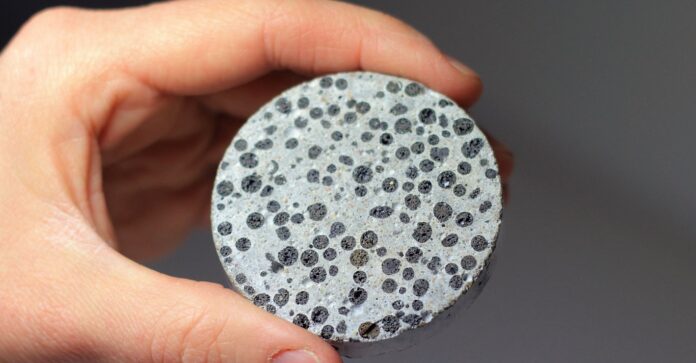The Ever-Evolving Building Industry: From the Hoover Dam to the Burj Khalifa
The building industry has undergone significant advancements throughout history, leading to the creation of awe-inspiring structures like the Hoover Dam, the Golden Gate Bridge, and the Burj Khalifa. However, with the growing need for sustainable and eco-friendly solutions, researchers and scientists are turning towards the next generation of building materials that promise to revolutionize the construction industry.
Transparent Wood: A Window to the Future
Researchers at the KTH Royal Institute of Technology in Sweden have developed a process to create transparent wood panels. This new material has the potential to be used as windows, semi-transparent facades, and in place of glass in solar panels. By removing the lignin, a complex organic polymer that gives wood its rigidity and color, from wood veneer and impregnating it with a transparent polymer, polymethyl methacrylate, the researchers have created a material that is about 85% transparent. However, the researchers are working tirelessly to improve its transparency and scale up the manufacturing process to meet the demands of the industry.
Self-Healing Concrete: Mending Cracks and Fostering Sustainability
Self-healing concrete and asphalt are also promising materials that have gained significant attention in recent years. With the ability to embed substances that react with carbon dioxide and moisture in the atmosphere or the material in the concrete, these materials can fill and harden the cracks, making them more sustainable. The University of Victoria in British Columbia and Delft University of Technology in the Netherlands are two institutions that have made significant strides in the development of self-healing concrete, paving the way for a more eco-friendly construction industry.
Solar Cells: A Bright Future with Energy from Raindrops
Researchers from Yunnan Normal University and Ocean University of China have developed an all-weather solar cell that harnesses energy from raindrops. The solar cell uses organic dye and an atom-thin layer of graphene to generate electric potential from the positively-charged ions in salt or rainwater and the graphene’s negatively-charged electrons. While the panels are not a viable option yet due to the high cost of graphene production, low ion content in rainwater, and low energy conversion rates, they offer a glimpse of the potential of harnessing energy from the elements around us.
Carbon Capturing Concrete: Mitigating Emissions and Building for the Future
Researchers at UCLA have developed CO2NCRETE, a building material that utilizes carbon dioxide emissions from power plant smokestacks to create a cement-like material. By combining lime with carbon dioxide, the researchers have created a product that could help mitigate carbon emissions while creating sustainable building materials. Although CO2NCRETE has only been created on a lab scale, other companies like Calera, CarbonCure, and Novacem have also been making strides in creating carbon-capturing concrete products by capturing carbon dioxide from industrial emitting sources and converting it into a solid mineral blended into the concrete.
Conclusion: Paving the Way to a Sustainable Future
The development of new building materials promises to provide sustainable, eco-friendly, and efficient solutions to the construction industry. Transparent wood, self-healing concrete, solar cells that create energy from raindrops, and carbon capturing concrete are just a few examples of the next generation of building materials being researched and developed. While these materials are still in the experimental stage, they offer a glimpse into the future of the construction industry, where sustainability and efficiency go hand-in-hand.















